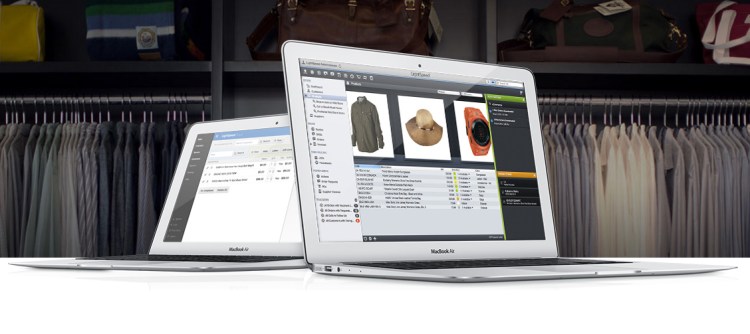If you read VentureBeat regularly, you may have learned about Shopify last month, when the e-commerce company announced a $100 million funding round to bridge the gap between physical and digital retail.
But Shopify isn’t the only software maker aiming to connect retail across cyberspace and the real world.
LightSpeed, a competing retail software provider, today announced a solution that helps stores sell both on and off the web. And although it has fewer vendors, LightSpeed says its customers process substantially more payments than Shopify’s vendors.
LightSpeed today revealed that its 17,000 retailers processed roughly $6 billion in transactions last year, or more than $352,000 per customer. Meanwhile, Shopify processed nearly $1.7 billion in payments across its 80,000 stores in 2013, according to a Shopify representative.
“It really does speak to our very different approach,” said LightSpeed CEO Dax Dasilva in a conversation with VentureBeat. “Our type of retailer needs a full set of tools. And we were brick-and-mortar first, so we built our tools with the brick and mortar store in mind.
“But now [our vendors] can continue that conversation with customers after they leave the store.”
Dasilva is referring to the launch of LightSpeed’s web-based system for managing sales, inventory, and customer relationships. Accessible from an iPad app or any modern web browser, it enables LightSpeed vendors to consolidate their offline and online sales into a single dashboard. Dasilva thinks its ease of use might encourage some of LightSpeed’s offline-only vendors to set up a web store.
A distinguishing factor between LightSpeed’s cloud and other solutions is its integration with suppliers, noted Dasilva. So if you operate a bike store, the system will connect you with directly your bike suppliers; it can make order suggestions and even replenish your stock, if you enable that feature.
“That’s not something that an e-commerce system really offers,” said Dasilva. “We add tons of new supplier catalogs every week.”
LightSpeed got its start as a retail system built for a Mac dealership with four stores. The project ended up getting shelved, but other Apple dealerships were interested, so Dasilva took the best ideas and started Lightspeed in 2005.
“But I made sure this retail system was going to be versatile, not just related to electronics and computer stores,” he said.
The company has grown steadily since. It didn’t raise any outside funding until 2012, when it nabbed a $30 million investment from Accel Partners — around the time LightSpeed launched its mobile solution.
“This was when the Apple stores were really reinventing retail, and this was a way to get the Apple store magic into other retail spaces,” said Dasilva. “We really rode that wave.”
Now LightSpeed has 17,000 vendors using its system, 7,000 of which signed up last year. Most are small, local retailers, but larger chains and brands are beginning to use LightSpeed, including Adidas (for its pop-up stores) and Toms Shoes.
Going forward, Dasilva is planning to expand LightSpeed’s analytics capabilities. He said customers are clamoring for more useable data and dashboards.
“We want to take that much further in terms of them being able to act on trends that are happening with their inventory and with their customers,” he said.
LightSpeed’s revenue grew more than 50 percent last year, according to Dasilva, and its employee count swelled from 53 to 156 over the past 18 months. “It’s been pretty crazy,” he said through a laugh.
VentureBeat's mission is to be a digital town square for technical decision-makers to gain knowledge about transformative enterprise technology and transact. Learn More






![Reblog this post [with Zemanta]](http://img.zemanta.com/reblog_e.png?x-id=41ba8c44-24fa-460e-af9f-3b3f14bc00f5)
